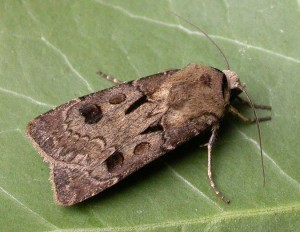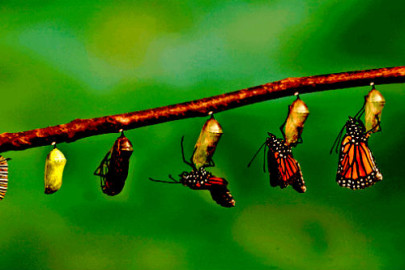A Dabbler Country double bill today. We are delighted to present a post from Martin Wainwright. Martin has written numerous invaluable books about the countryside, is the northern editor of The Guardian and is a prolific blogger on the subject of moths…
As an increasingly ancient journalist, I’ve lived through many stories of impending doom based on supposedly scientific data. I like to recall them as, glass of wine or beer in hand, I potter out in the evening to set my moth trap.
Poisonous burgers, swine flu, GM crop mayhem and of course climate change and global warming. Something in all of them, of course, but how much more we would learn, and how much more calmly, if reporters and editors were all issued with a Robinson moth trap.
 Named after a moth-absorbed couple (an excellent phenomenon in a world still too dominated by men), this is a sturdy plastic bowl with a transparent cowl and an incredibly powerful light called a mercury vapour bulb. The lamp is the lure, although no one is entirely sure whether moths are attracted to light or – more likely but still not certain – disorientated and drawn in like rebel starfighters collared by Darth Vader.
Named after a moth-absorbed couple (an excellent phenomenon in a world still too dominated by men), this is a sturdy plastic bowl with a transparent cowl and an incredibly powerful light called a mercury vapour bulb. The lamp is the lure, although no one is entirely sure whether moths are attracted to light or – more likely but still not certain – disorientated and drawn in like rebel starfighters collared by Darth Vader.
The fact that even the reason for the Robinsons’ success remains to be nailed is both the starting, and finishing, point for a discussion about what moths can teach us about life. After only a few evenings (and I have trapped for three years now, since the wonderful birthday when my wife Penny gave me this vast object wrapped in cheery paper), you realise how much we still have to discover about, well, pretty much everything.
Moths are only one of many teachers of this lesson. I remember reading in The Economist as a student a fascinating article on the failure of physicists to understand exactly how, and why, ice skates work. But a small and, in Britain, apparently dull type of creature which comes out only at night, is a particularly revealing candidate for study. Especially when many people are misguidedly terrified of moths stinging them, making a beeline for trouserlegs and skirt hems, or trying to burrow into your ear.
I was at an internationally important nature reserve and Site of Special Scientific Interest in the Black Country the other week. Guess which category of inhabitant was marked in the database: ‘Much work still to be done.’ On holiday in Devon, I saw the unmistakeable bluish glow of a trap, got talking to its owner and found that he had discovered two ‘extinct’ species in one wood. “They were never extinct,” he said. “It was just that nobody had trapped there for years.”
Each hobbyist thus fills a gap and adds to the hugely incomplete picture; and blogging about the moths allows you to raise questions and share puzzles as these come along. Why is blue almost entirely unknown in European moths? Why does one moth have antennae like the most complicated TV aerial ever devised, while a closely related one, or sometimes even the other gender of the same species, has something resembling a tiny walking stick?
Readers speculate, we correspond, serendipity regularly brings unexpected new friends. When I posted about the Heart and Dart moth (above) – almost boringly common in Leeds – I got a warm and excited message in my Comment box from the couple who run Heart and Dart, a shop in New York which sells soap made from tea. En route, you discover an attic-full of established facts: e.g. Britain’s blue tits alone eat some 35 billion caterpillars a year. But much more striking, is how many more gaps there are for observers gradually to fill.
Just now, I am moving my trap around. Tonight I plan its debut on our bedroom balcony (Penny being away with her Mum for a few days). My real ambition, though, is to copy the legendary Professor E.B. ‘Henry’ Ford who persuaded the RAF to allow him to use a light trap 200ft up in a tethered blimp balloon. He was trying to work out whether moths were attracted to the full moon – the stuff of many legends. Needless to say, the scientific jury is still out on that one too.
…As a PS. The Dabbler’s Brit asked me if moths have a political side, and the answer is yes. The annual infestation of Australia’s federal Parliament by the Bogong moth is notorious – but not the moths’ fault. The building in Canberra with its vast illuminations is right on the moths’ migration path. Also there was a collector on the Isle of Wight in the 1940s called Blair who has more British moths named after him than anyone else – Blair’s Mocha, Blair’s Shoulder-knot and Blair’s Wainscot. But I haven’t (yet) been able to prove any link.












I’m reeling at the appetite of the blue tit – 35 billion caterpillars! – which I assume they must eat over just a few spring and summer months. That means hundreds of millions a day consumed. I’m surprised we can’t hear it.
How many caterpillars is that per blue tit? A queasily large amount I imagine.
I guess that’s something we’ll never know – like most things, especially about moths.
A lovely post!
May I be the first on Dabbler Country to suggest that we begin the systematic destruction of these obviously evil blue tits?
Excellent piece Martin, and one which has tempted me to look into making myself a moth trap for next summer!
I’m not sure that mass extermination is really in the spirit of Dabbler Country, Worm, but dear me that is shocking amount of caterpillars.
Apparently there are around one million blue tits in Britain. Let’s say the 35 billion caterpillars are eaten over six months of the year. That would mean each blue tit eats a little fewer than two hundred caterpillars a day or, say, 16 an hour in a twelve-hour day. That’s quite a clip to maintain. But they’re probably small ones that they gorge on periodically. (I seem to be becoming quite expert in this already – who said science was difficult?)
Ah but why only six months Gaw? Many moths overwinter in the larval state and those ravening bluetits would no doubt have no trouble winkling them out of their hiding places.
What a lovely post! However, the sight of any moth fills me with terror. Not through fear of insects, but fear my precious clothes will be destroyed. The Robinson trap is quite a curiosity – but looks to be very pricey. I have my own methods of keeping moths at bay,. leaving them free to fly (hopefully far) away.
Hi all – thanks v much for posts. I have to admit that the caterpillar statistic is vulnerable to my overall argument. How on earth do we know? And what does ‘estimated’ (much-favoured by journalists such as myself) mean? But I noticed a piece in the Telegraph in 2007 (www.telegraph.co.uk/earth/earthnews/3312972/Ten-million-blue-tit-chicks-died-during-summer.html ) saying that TEN million blue tit chicks had been killed off by rainy weather in the UK that summer, which makes the 35 billion a bit less of a marathon chomp.
We could sort out Susan’s anxieties by directing the tits to as many as possible of the caterpillars of Tineola bisselliela whose depradations on clothes give a bad name to the innocent 99.999999 (at least percent of moths.
All warm wishes, MW